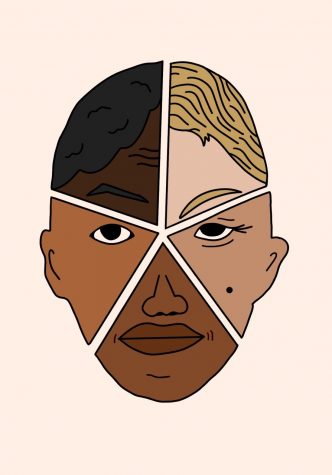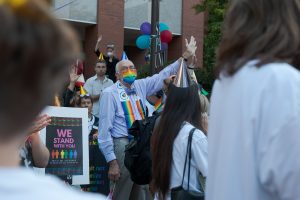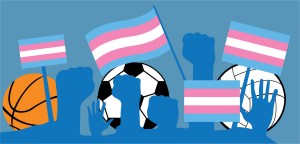Mixed mindedness
A take on being multiracial in America
November 21, 2019

“What are you?”
A question most, if not all, mixed-race people have been asked at least a few times throughout their lives.
While being mixed is more commonly embraced today, society still needs to look at how categorization, labels and biases in communities can impact someone who identifies as multiracial.
Interracial marriage was illegal in the United States up until 1967, when the ruling of the Supreme Court case Loving V. Virginia set a precedent that legalized interracial marriage across the country.
The Loving case overturned laws that did not allow for miscegenation.
The banning of miscegenation in the U.S. has existed since the Colonial Era. However, multiracial people had existed even before the Lovings won the case.
Race ‘mixing’ has been going on for as long as the invention of the division of races.
The term ‘mulatto’ was a term created to describe a mixed-race slave with one White parent and one Black parent.
Mulatto is an offensive term because it insinuates that white and black people are different species — as if Black people are not human. The ‘tragic mulatto’ is a trope that assumes a mixed-race person to be sorrowful, suicidal or insane since they find it difficult to exist in society.
Many multiracial people do go through struggles involving identity crisis, not feeling accepted by one race or having to ignore the other.
But this does not turn them into a tragedy.
Pew Research Center shows that 69% of multiracial adults with a Black background have similar experiences, attitudes and social interactions that are more closely aligned with the Black community.
A different pattern appears among biracial White and Asian adults who feel more closely connected to their white heritage than to their Asian heritage.
Out of biracial adults who are white and Native American, only 22% say they have more in common with Native Americans, while 61% say they have more commonalities with White people.
There is no shame in being mixed, but there is shame in the history of American society that still impacts how people co-exist today. The mixed life struggles do not come from not knowing who oneself is. They come from others trying to tell them who they are.
When someone asks me, “what are you?” I typically say I am Black and White — that is the easy answer.
What goes through my head is how I am a person whose ancestors were oppressed and were the oppressors; were immigrants that sailed across the seas in search of new land, and the First Nations people who have only known this land as their rightful home.
Not a day goes by when I do not think about what it means to be multiracial. Ever since I was a little girl, people would comment about my hair texture, my skin color — comparing and contrasting my Blackness with my Whiteness.
Attending a High School composed mostly of minority students helped me gain a better grasp of realizing my race is not what defines me. I was surrounded by many people of color who openly embraced discussions about their ethnic, cultural backgrounds.
“I feel most colored when I am thrown against a sharp White background,” Author Zora Neale Hurston said.
Seattle Pacific University, being a Christian university with a majority White student body, feels like a sharp White background — often alienating for a person of color.
Rachel Ann Regner, a sophomore at SPU majoring in Economics with a concentration in public policy and an Asian Studies minor, talked about her experience being a White and Filipino woman raised in Texas.
“I do not believe in percentages,” she commented on how ethnicity is often quantified.
“I believe that it invalidates someone’s identity. As a mixed kid, it makes people more confused and feel as if they have to justify themselves.”
She explained how her appearance and skin color have impacted her life.
“The first time I realized I was mixed was in second grade, my dad brought me lunch, and all of my classmates started asking me if I was adopted,” she said.
“In Asian culture, skin color is huge. Growing up, I was way tanner than white kids but not as brown as Filipino kids. People would say to me, ‘why do you want to be tan? You are White, that is pretty,’” she said.
“But then they would also tell me I needed to be tan to be Filipino. There was one point where I rejected being Filipino. And I focused on my southern culture instead.”
What resonated with me most in the conversation with Rachel was that when you are mixed, sometimes it is about “just trying to be enough.”
“The only one who can understand being a mixed kid is a mixed kid.”

























































































